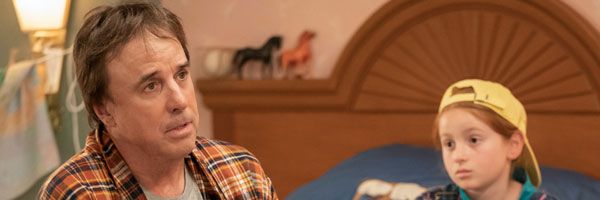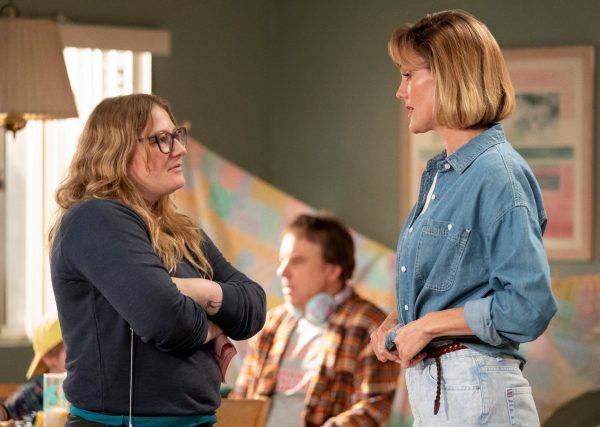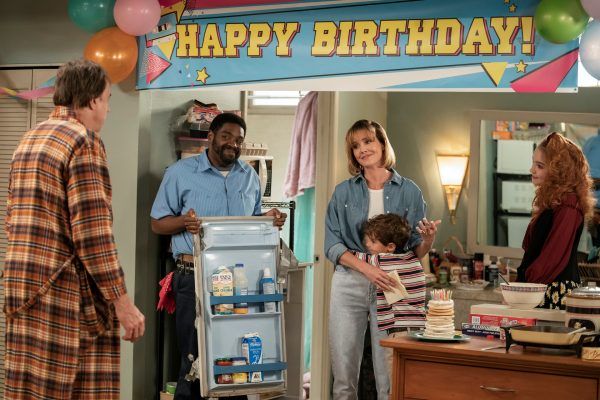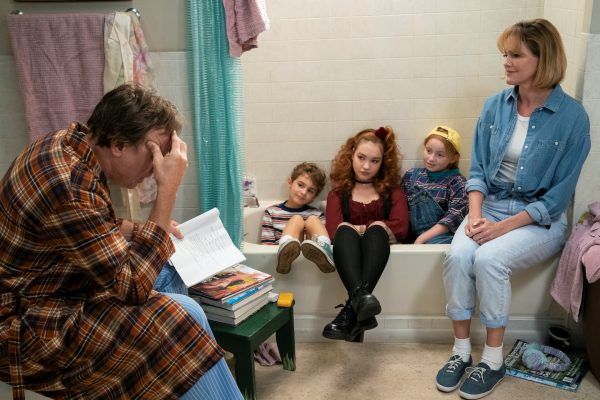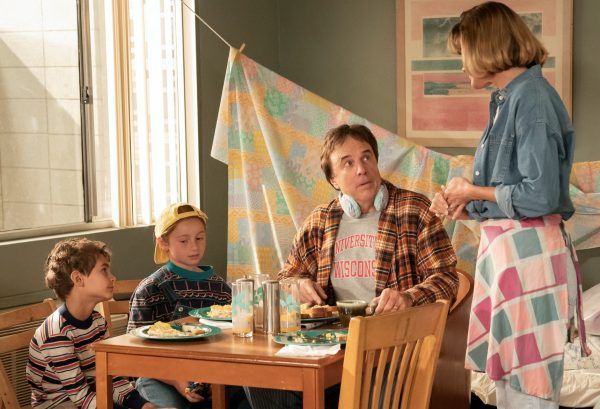Created by Mark and Jay Duplass, the HBO half-hour anthology series Room 104 is currently in its fourth and final season, with 12 new episodes that explore different genres, characters, tones, plots and time periods. Set in the same room of a typical American chain motel, the characters and the director change from episode to episode (although there are some repeat filmmakers), and the story being told can be anything from dark comedy to sci-fi to sitcom to animation. Sometimes there’s blood, sometimes there are tears, sometimes there are original songs, and sometimes there’s even a bit of dancing.
During this 1-on-1 phone interview with Collider, executive producer Mel Eslyn — who also wrote and directed the Season 4 episodes “Oh, Harry!” and “Fur” — talked about her journey from running Duplass Brothers Productions to directing episodes of Room 104, what she finds most interesting about the opportunities that a show like this provides, the process of getting the episodes made, what this experience has taught her about directing, and what she’d like to do next.
Collider: As a producer on this show previously, how did you originally get involved with this whole show before directing episodes?
MEL ESLYN: I run Duplass Brothers Productions, and for a while, I was just focusing on the film side of our company and was like, “Mark and Jay, go run with TV for a bit.” And then, at some point, we were like, “Everything needs to be together. We’re all family.” I was whispering on Season 1 of Room 104, helping guide things. And then, on Season 2, I was like, “Okay, I love the show. I’m gonna officially EP it.” And then, honestly, because I did not ever expect to be running a company, and a lot of my job is servicing other people’s dreams, which I love, but I had all of these dreams and desires and artistic fantasies in my own brain and was like, “This is the perfect platform, so I’m gonna give myself some opportunities to go wild, a little bit.”
So, if that hadn’t been the job goal, originally, how did you end up running the company in the first place?
ESLYN: I have no idea. Mark and I first met on this film, called Your Sister’s Sister, and developed this amazing relationship. We both came from similar mindsets, as far as how to approach our art. We both, at some point in our histories, played in bands that intersected. We both had this joy in what we did and were like, “Let’s go do this together, forever.” I wouldn’t be running a company unless it was for Mark and Jay Duplass. The brothers got me to do something that I didn’t plan on doing.
What do you find most interesting and intriguing about the opportunities that this show provides?
ESLYN: To be able to explore some really wild and crazy dreams that a lot of us have, as artists, whether it’s writing and directing, or supporting somebody else’s vision, or even supporting a new voice who hasn’t really gotten that platform yet, and be able to do that with somebody of HBO’s caliber is amazing. I really think HBO has been great, in giving us this platform, trusting us, and saying, “Go out and chase those wild fantasies.” It really has opened the door for us. Multiple times, we’d have an actor in an episode who would watch the process and go, “You know what? I think I wanna try directing.” And we’d be like, “Great, let’s do an episode with you and we’ll shepherd you into directing.” It’s just created this great platform for people to experiment and take a step, where it could be scary to try something new, but with a really solid, supportive family.
The episode that you did in Season 3 (“The Specimen Collector”), and the two episodes that you did this season (“Oh, Harry!” and “Fur”), you wrote and directed. Did you always want to do both of those things? Was it important to you to direct scripts that you’d written?
ESLYN: Yeah, it definitely is. I started as a writer at a very young age. Directing is, to me, more of an extension of writing than it is the other way around. It’s really just me writing something and having a sense of what I want that to be, in its final form, and the way to guarantee that is to direct it and also EP it, so that you get to see it, all the way through to the end. There was one episode in Season 3 that Mark and I co-wrote together, which was me definitely trying my hand at seeing whether I could be okay with somebody else taking my material, and I realized that it was Mark that was probably the safest person for me. I’m excited for future opportunities, but half the time, I’m writing for myself or my younger self, and I fall in love with it and just want to see it through.
You have a very short time frame for shooting these episodes, but how long did you have to work on and develop the scripts for them?
ESLYN: It was maybe two months. We did this season a little bit differently. In the past, we parsed it out and came up with ideas, but then picked the writers to take it and run with it, with us creatively overseeing. This year, we started a little bit more within ourselves, as a writers’ room and as executive producers to say, “What’s left inside all of us? What are the stories we haven’t chased yet, within this room, or given their voice yet?” We had some luxury with this. We weren’t under a crazy strict timeline, so we had a good bit of time to write our scripts, but of course, like we all do, we put them off. And then, at the last minute, we were like, “Oh, yeah, we have to write this.” But I would say that the scripts actually came together fairly quickly because a lot of these ideas had been marinating with us for a while. But then, the crazy thing is that you usually have three days to shoot, so you’ve gotta be very specific with the scripts about what you want and go in pretty prepared.
How was it doing an animated episode?
ESLYN: I thought the animated episode was going to be the easiest. I was like, “Oh, I’m running a company and I’m going to totally just direct an animated episode on the side. It will be super easy.” Not at all. It was horrendous. That was a five months, every day, full-time process that I never would have imagined. I loved it so much, but it was such a different way of working and making things. That was an endeavor, for sure. Within the world of Room 104, we had not done anything like that.
What inspired doing that as doing an animated episode? Was it just that there was no way to do a story like that for this series in live-action, or did you specifically always want to tell that story as an animated story?
ESLYN: I definitely had this story, and then had the dream to do [something] animated, as separate ideas, and then married them, at some point. At the time, it was probably partially motivated by the fact that I could pull off more in the animated world. It’s also an animated style that’s this hybrid of old and new, and then setting it in the ‘80s, I was trying to make it accessible to all age ranges by making an animated. It’s a late night time slot on HBO, but I was like, “If I animate it, kids can access it.” And I wrote it as a love letter to the little girls in my life. I wanted to give them this fun, empowering story, but also make it this universal story that spans all of these different decades, making a statement on saying that a lot of things haven’t changed and there are still creeps in the world, and they haven’t gone away.
In comparison, what was it like to create a sitcom world inside of one room?
ESLYN: Oh, my god, it was a dream come true. I didn’t realize that I wanted to be a sitcom showrunner, but that was apparently inside of me. I grew up watching Wings, Cheers, and Night Court, and from an early age, that drilled down the sitcom pacing and pattern form in my head. And then, Room 104 is this living, breathing thing that makes you turn everything sideways, and then make it weird. So, here was this sitcom, in a multi-cam format, within this room, and then it’s also going to have that Room 104 twist to it. Just from the physical recreation of a sitcom, pulling a wall away and having to navigate where the audience is. The camera shots, and having three or four cameras going, at any one time, just created a whole different new challenge for that room. Our art team and construction had a lot of work on that one, but it was fun. And then, we brought in bleachers and did a live audience for one section. It was so cool to mix up the energy of the room.
I love that you also got your own credit sequence for it, too.
ESLYN: Oh, yeah, that was a big deal. I said, “I want a title sequence that sets up the backstory, like they do for Perfect Strangers, but in the style of Home Improvement.”
What was it like to work with Kevin Nealon on the sitcom episode?
ESLYN: Oh, my god, I grew up watching Hans & Franz on SNL. I don’t get starstruck, but it’s Kevin Nealon. He’s so amazing, and just the loveliest guy ever. If anybody watches his hiking show or looks at his paintings, the guy is full of so many surprises. The big thing for me was that we had three days and we were shooting a sitcom episode, which was so out of the ordinary for us and the team, and Kevin walked in and, without saying it, he basically set the tone for what a sitcom is. He was so dialed-in to how to work within that form and how to land the jokes, and understood the pacing. It’s one of the things where, as a director, you hate it when you have nothing to say or any constructive feedback to give back. But with Kevin, I was like, screw it, he knows he’s good, and I don’t need to feel bad about not having notes, at all times, for him. At some point, he was like, “I don’t know if I can get emotional,” and I was like, “I know you can.” He had to get emotional, by the end, and he did one take and said something like, “I’m just not giving it,” and I was like, “Holy shit! You had that in you?” He’s a very, very humble guy who’s a lot more versatile than he was giving himself credit for.
In what ways would you say that telling an entire story inside of a room, whether it’s live-action or animated, is freeing, and how does it also feel constricting?
ESLYN: There are the obvious constraints of wanting to get outside of the room. I’m such a big believer in creating a little bit of constraint, by creating even just one rule, or by creating some walls. The most creative people will push within those limits. I embrace a lot of art in that way, and we do, as a company. That’s where Duplass Brothers started. It’s about working within what we have. I really do believe people push those limits and come out with something. It’s the challenge of finding a way around it or making the thing unique that brings out some of the best work in our collaborators.
What have you learned about directing from having this experience, and how do you think that will carry with you for any other directing projects you do in the future?
ESLYN: Every episode is such a different tone and its own genre, or multi-genres, and you have to get yourself into that real quick, and get the whole crew switched over. We really didn’t have days in between. I would go from producing a horror episode, to the next day having to direct a sitcom episode, and we had to do that for everybody, in another land. That’s a hell of a short time to establish a rapport with actors. As a director, it was such a great learning experience to know that you’ve got to go in and have your head so wrapped around it because you’ve got three days and actors coming in, who want to trust you, real quick, to make it work. It’s just about stepping up that game and being very prepared, or open to the wild things that happen in that room. You have to be ready for the punches that get thrown at you and be able to pivot real quick, when you only have three days.
Have you thought about the types of projects you’d like to do, in the future? Have you thought about what the next step for you is, as far as directing?
ESLYN: Because I have this whole day job of Duplass Brothers, it’s constantly the struggle of navigating that with my own personal desires, creative dreams, and aspirations. I lost a really good friend, filmmaker Lynn Shelton, and she didn’t direct her first film until she was 39. She called herself a late bloomer, and I’m two years away from 39, running a company and going, “Oh, shit, I still haven’t directed my first feature film. I've got to get my act together. That has been this lovely kick in the butt, of all of these things that I’ve been talking about, and how I need to go do that. In a very simple sense, I need to direct my own feature, and especially during these times, it’s very much going to live in a location that I can make an entire movie in, with just a couple of people. I know how to do that, so we’re good to go.
Room 104 airs on Friday nights on HBO.

